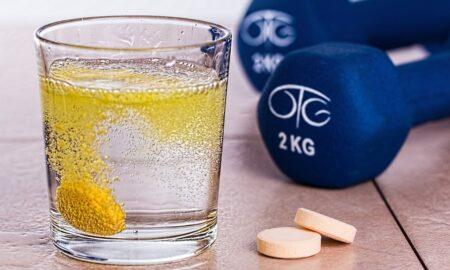I don’t know how many times I’ve heard this line while working at GNC: “I just can’t seem to put on any weight because my metabolism is too fast.” When I ask the customers how often they eat, they give the universal answer: “All of the time.” Next, I ask how much they eat, and once again, I get a universal answer: “A lot.” As I continue to talk with these people, I make them realize that they’re not consuming anywhere near enough calories to put on quality mass.
The average person thinks that eating a lot means three to four times a day, with burgers, fries and Cokes being staples of the diet. Well, I’ve got news for you. If you want to be big, you have to eat big. That’s one of the absolute truths of bodybuilding.
I’m always coming across articles with a new twist on muscle growth, but I think the authors have too much time on their hands. I guess you can say I’m old school because as far as I’m concerned, the formula for success in bodybuilding is very simple: Train hard, train consistently, eat a lot of healthful foods, rest, and grow. If you follow it, muscle growth is guaranteed.
It’s time to stop whining about being a hardgainer and start doing your homework. After all, spring break is right around the corner.
Step 1: Pound Down the Calories
As I indicated above, calories are key. If you’re not eating enough calories, you will not grow. Sure, reducing calories is a great strategy if you’re dieting down, but if you’re looking for size (like during the winter), you have to go the other way and up your intake. It may be difficult for you to pound back those calories initially, but I promise that after two weeks, eating more than you’re used to becomes almost second nature. You should aim for around 20 to 25 calories per pound of bodyweight—4,000 to 5,000 calories per day for a 200-pound man. I know it sounds like a lot, but if you eat the right foods, it makes a huge difference.
Step 2: Get the Right Amounts of Macronutrients
Now that we’ve established your calorie needs, it’s time to break down the macronutrients. There are several schools of thought on the subject, but I’ve found what works for me and many others: shoot for a diet in which approximately 50 percent of the calories comes from carbohydrates, 30 percent comes from protein and 20 percent comes from fat. Your numbers may vary slightly; those are basic percentages. For a 200-pound trainee they translate into 500 to 625 grams of carbohydrates, 300 to 375 grams of protein and 88 to 111 grams of fat per day. That takes some planning, but once you’ve been doing it for a week or two, it becomes second nature. You see a pattern forming here?
Step 3: Have a Plan
Now it’s time to formulate your plan of attack. There’s an old saying: He who fails to plan, plans to fail. That certainly holds true here. If you know where you want to go, but you don’t know how to get there, how far do you think you’ll get? So my advice is to plan your meals—and your training—and write it all down. Better yet, keep a journal. I know it’s tedious, but it works. It allows no room for mistakes in your eating and training. If you’re not making gains, you know exactly where to look for the problem and how to correct it. Without those notes you’re walking blindly into a maze.
Step 4: Stay Consistent
If you know where you want to go and have a nutrition plan for getting there, that’s great; however, if you aren’t consistent in following the plan, you’re merely spinning your wheels. The need for consistency is another absolute in bodybuilding. Weeks build on days; months build on weeks; years build on years.
Here’s a diet I use that incorporates the four steps to eating intelligently for building mass.
Mass-Building Diet
Meal 1: 8:15 a.m.
1 cup orange juice
1 cup milk
40-gram whey shake
1/2 cup grits
1 multivitamin
500 milligrams vitamin C
400 international units vitamin E
Meal 2: 11:30 a.m
1 1/2 cups rice
1 can tuna
10-gram whey shake
Meal 3: 3 p.m.
Postworkout shake
75-100 grams carbs
40 grams protein
5 grams creatine
Meal 4: 5 p.m.
1 1/2-2 cups rice
40-50 grams protein from
chicken or tuna
500 milligrams vitamin C
400 international units vitamin E
Meal 5: 7:30 p.m.
1 1/2 cups rice
30 grams protein from
chicken or tuna
Meal 6: 9:30 p.m.
1 1/2 cups rice
8-10 ounces steak
Salad
That results in roughly 4,500 to 5,000 calories per day with high carbohydrates, high protein and minimal fat, which is the ideal bodybuilding diet for me. You may have to alter it a bit to find the best formula for your body. I try to get most of my protein from real foods rather than supplements, and I also try to eat red meat at least once a day. Sometimes on the weekend I eat red meat as often as three times a day.
This eating schedule is organized around my daily activities, which include school and work. If you’re really serious about packing on quality size, you’ll find a way to eat right. It just takes a little planning and a lot of dedication.
If bodybuilding were easy, everyone who lifts would weigh 240 pounds with 5 percent bodyfat and have a slew of trophies. It isn’t, though, and only the most dedicated and disciplined individuals can succeed in it. Are you one of them? If so, it’s time to prove it.
Editor’s note: For more articles by Phano Som, visit www.Bodybuilding.com. IM




















You must be logged in to post a comment Login